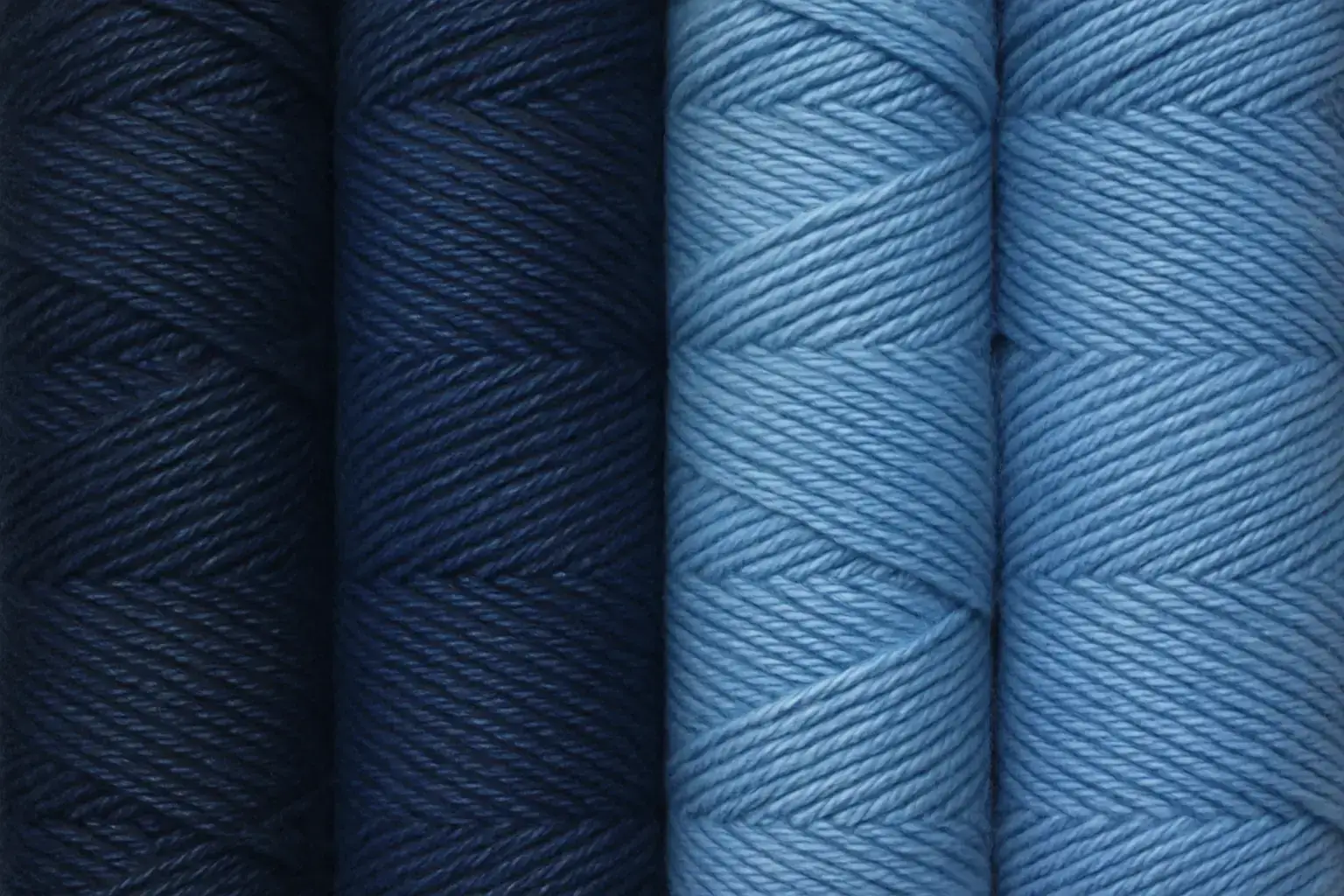Jeans may seem like a basic item in everyone’s wardrobe today, but in reality, they are the result of a complex manufacturing journey that combines craftsmanship, engineering, and innovation. In this article, we take you on a detailed tour of the denim world—from the first threads to the final jacket—analyzing the stages, materials, and mechanical testing that ensure quality and durability.
What Is Denim Fabric?
Definition of Denim and Its Historical Origin
Denim, scientifically known as “Denim,” is a cotton fabric distinguished by its twill weave pattern, giving it strength and rigidity. It originated in the 17th century in the French city of Nîmes, which is where the name “denim” comes from (“de Nîmes”). It later made its way to America and became globally recognized as a staple in workwear clothing.
Why Is Denim Preferred in Ready-to-Wear Fashion?
Denim is known for its strength, flexibility, and ease of treatment, making it ideal for jeans, jackets, and even shirts. It also allows excellent control over color and texture during manufacturing processes such as washing and chemical treatments, enabling designers to create both classic and modern styles with ease.
Components and Types of Denim Fabric
Pure Cotton vs. Blended Denim
- Pure Cotton: Offers a natural feel and softness with comfortable wearability, though it tends to be less elastic.
- Blended with Polyester or Lycra: Adds higher elasticity and resistance to tearing and shrinkage.
Properties of Polyester and Lycra Blended Denim
Incorporating synthetic fibers like polyester or Lycra improves wrinkle resistance and reduces shrinkage, which is particularly important in jacket production. This is evident in brands like Mamilly Jeans, which rely on blended fabrics for long-lasting quality.
Impact of Weave Type (Plain vs. Twill) on Final Quality
Twill weave gives fabric a diagonal pattern and is widely used in most denim types due to its strength. In contrast, plain weave is used for lighter designs and is generally less dense.
Steps to Produce Ready-to-Wear Denim Fabric
Spinning and Weaving on Sulzer Looms
Using modern Sulzer looms, cotton threads are spun and woven into uniform, coherent fabric—a crucial step to produce consistent raw materials.
Initial Processing of Raw Fabric
This phase involves cleaning the fabric from impurities and adjusting fiber surface tension to ensure even dyeing and subsequent treatments.
Chemical Treatments and Final Finishing
The denim is treated with chemicals such as enzymes or caustic soda to achieve the desired color and texture while minimizing shrinkage.
Pre-Production Treatments for Denim
Enzymes and Their Softening Effect on Fabric
Enzymes break down excess fibers, softening the material for a more comfortable wear—an important requirement in modern denim manufacturing.
Stone Washing for a Vintage Look
Stone washing creates a worn, vintage appearance, commonly used in casual denim jacket designs.
Anti-Shrink Treatment and Its Role in Sizing Accuracy
The fabric is stabilized at specific temperatures to prevent shrinkage during use. This step is key for preserving dimensions, especially in precision-fitted designs.
Mechanical Performance Evaluation of Denim
Tensile and Elongation Tests: Before and After Treatment
According to a Textile Research Journal report, Lycra-blended denim showed a 20–30% increase in stretch compared to pure cotton, highlighting the role of fiber composition in comfort and performance.
Wrinkle and Shrink Resistance in Different Materials
Polyester-treated denim proved superior in resisting wrinkles and shrinkage, making it a cost-effective choice for jacket production lines.
Which Fabric Performs Best in Men’s Jacket Manufacturing?
In a practical study conducted by a manufacturing company in Egypt, 80% cotton and 20% polyester blend outperformed others in flexibility, appearance, and cost, making it ideal for Mamilly Jeans men’s jackets.
From Fabric to Jacket: Practical Application
Jacket Preparation Steps from Fabric
Includes cutting, ironing, sewing, and finishing, along with fitting tests to ensure accurate dimensions and quality lining and zippers.
Sample Comparison and Statistical Performance Analysis
Three samples of different weights (10oz, 12oz, 14oz) were tested using the Martindale durability test. The 12oz fabric struck the best balance between strength and comfort.
Ranking Materials by Efficiency and Economic Feasibility
- Blended Denim (Cotton + Polyester)
- Pure Cotton Denim
- Heavy Denim Without Enzymatic Treatment
The Future of Denim in Classic Apparel
Can Denim Be Used in Formal Wear?
With the rise of sustainable fashion, many global fashion houses are now incorporating denim into formal wear, including blazers and jackets, using sleek, refined designs.
Supporting Local Industries Built on Egyptian Cotton
Egyptian long-staple cotton is an ideal material for producing premium denim. Supporting local factories—like those supplying Mamilly Jeans—can restore Egypt’s place on the global manufacturing map.
Recommendations for Advancing Denim Production in Egypt
- Upgrade machinery and looms with digital models
- Train the workforce in modern technologies
- Adopt sustainability strategies and water recycling methods
Frequently Asked Questions About Denim Fabric
What’s the Difference Between Raw and Treated Denim?
Raw denim hasn’t been washed or chemically treated, while treated denim has undergone softening, coloring, and fixing processes.
Can Jackets Be Made from Denim Only?
Yes, but it’s best to use specific fabric weights (e.g., 12oz) to ensure comfort and durability in the final design.
What Is the Best Material for Making Jeans?
Blended fabrics (cotton + Lycra) offer more comfort and elasticity than pure cotton.
Looking for High-Quality Denim?
Explore the Mamilly Jeans collections crafted from carefully selected fabrics—from raw denim to tailored classic jackets. Browse the latest styles on the official website and become part of Egypt’s denim revolution.


